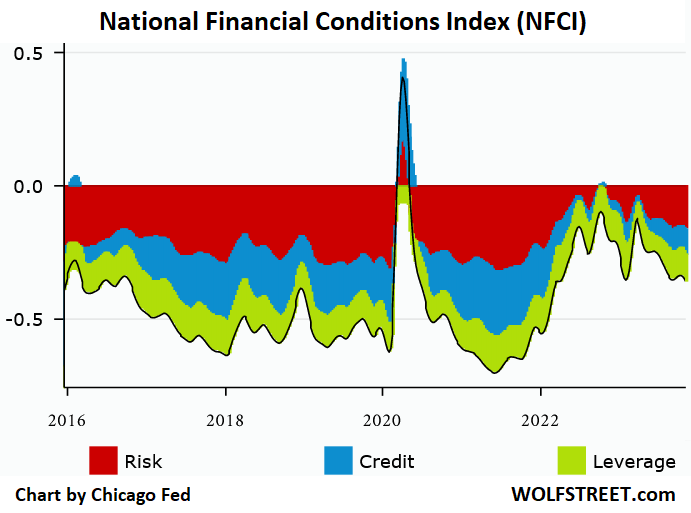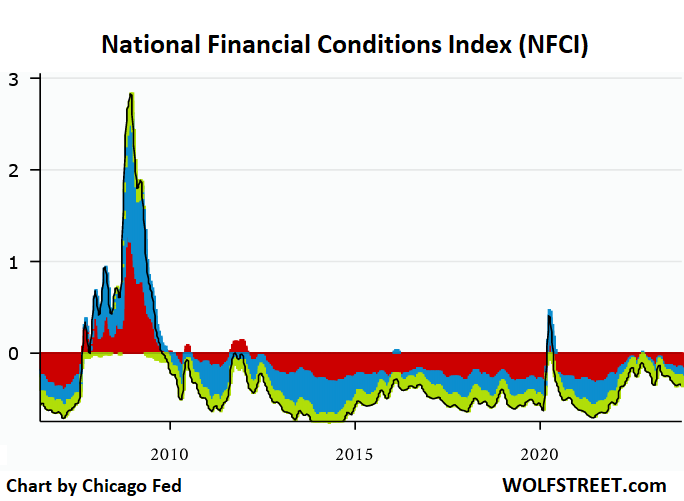He's not talking household savings, that's been getting spent. This is the big money.
From Wolf Richter at Wolf Street, November 10:
Financial Conditions loosen further: credit markets blow off the Fed to make sure “higher for longer” gets entrenched? That would be funny.
One of the big surprises this year is that the Fed’s 5.5% policy rates and $1.1 trillion in QT have neither meaningfully tightened financial conditions nor slowed the economy.
The Fed has been “tightening” since early 2022 in order to “tighten” the financial conditions, and these tighter financial conditions are then supposed to make it harder and more expensive to borrow which is supposed to slow economic growth and remove the fuel that drives inflation. “Financial conditions,” which are tracked by various indices, got a little less loose, and then they re-loosened all over again. It’s almost funny.
The Chicago Fed’s National Financial Conditions Index (NFCI) loosened further, dipping to -0.36 in the latest reporting week, the loosest since May 2022, when the Fed just started its tightening cycle. The index is constructed to have an average value of zero going back to 1971. Negative values show that financial conditions are looser than average, and they have been loosening since April 2023, after a brief tightening episode during the bank panic (chart via Chicago Fed):

You can see in the chart above how financial conditions tightened in March 2020, but not for long – by May 2020, as the Fed was dousing the land with trillions in QE, they were already loose again.
So, despite the rate hikes and QT by the Fed, financial conditions are as loose as they were when the Fed had just started tightening in May 2022, and they are far looser than the long-term average, though they have become somewhat less loosey-goosey than during the free-money era starting in mid-2020 through early 2022.
The long-term chart below of the NFCI shows what happens when financial conditions tighten so much that they strangle the economy, as they did during the Financial Crisis. The March-2020 spike barely registers in comparison.

The St. Louis Fed’s Financial Stress Index takes a similar approach and measures financial stress in the credit markets. The zero line denotes average financial stress. Negative values denote less than average financial stress. In the current week, it dropped to -0.56. The green line shows this current value across time and denotes that credit markets are still in la-la-land....
....MUCH MORE